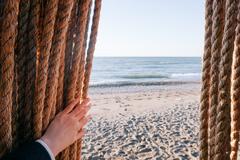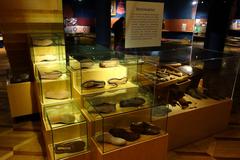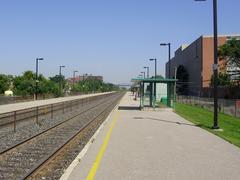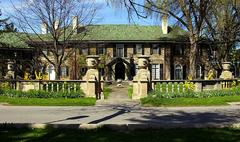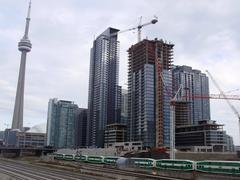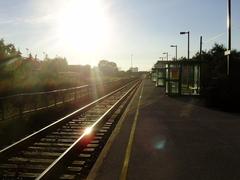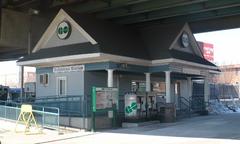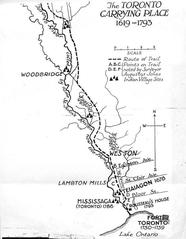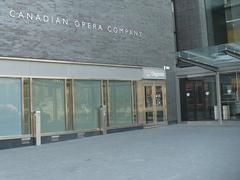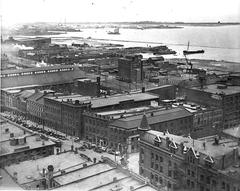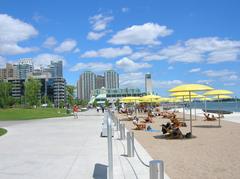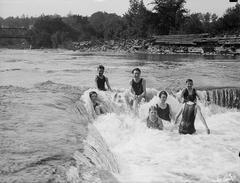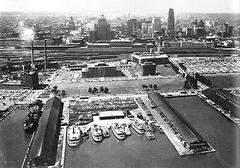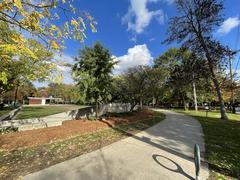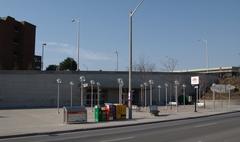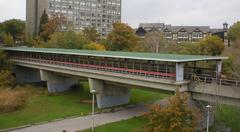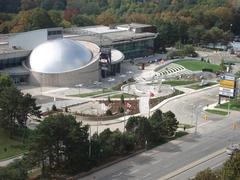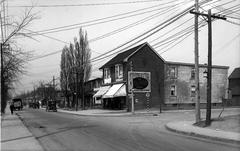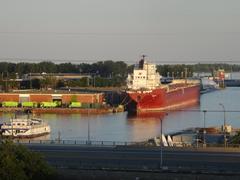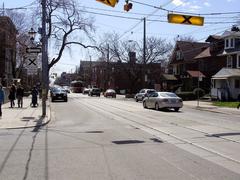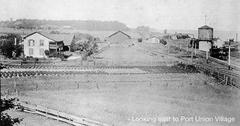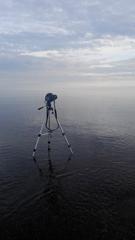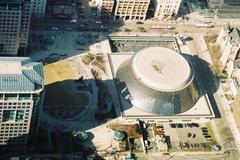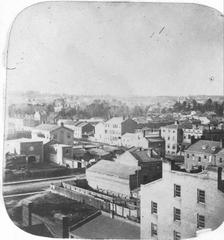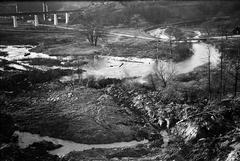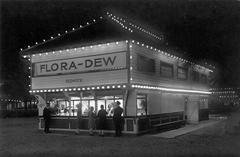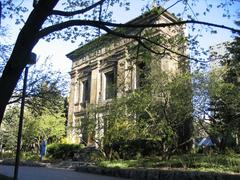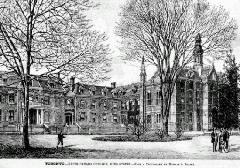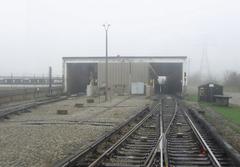
Comprehensive Guide to Visiting Woodbine Beach, Toronto, Canada
Date: 17/07/2024
Introduction
Nestled along the eastern shores of Toronto, Woodbine Beach stands out as a premier destination for both locals and tourists. This scenic beach, stretching over 15.2 hectares, offers a myriad of activities ranging from sunbathing and swimming to participating in vibrant cultural events. Beyond its recreational allure, Woodbine Beach is steeped in rich history and cultural significance, tracing its origins back to the Indigenous Mississaugas of the Credit First Nation who utilized the land for fishing, hunting, and gathering. As European settlers arrived in the late 18th and early 19th centuries, the area transformed, eventually becoming a beloved recreational hub by the early 20th century. Today, Woodbine Beach is not only a testament to Toronto’s dynamic history but also a vibrant space for community events, environmental conservation, and economic growth. Whether you’re here to relax, explore, or partake in one of the many festivals, Woodbine Beach promises a memorable experience. For more detailed insights into its history, attractions, and visitor information, this comprehensive guide aims to provide everything you need to know about visiting Woodbine Beach (City of Toronto).
Table of Contents
- Introduction
- Early History and Indigenous Significance
- European Settlement and Development
- The Birth of a Recreational Hub
- The Influence of the Beaches Community
- Modern Developments and Environmental Efforts
- Cultural and Social Significance
- Economic Impact
- Visitor Information
- Travel Tips
- Nearby Attractions
- FAQ
- Conclusion
- References
Early History and Indigenous Significance
Woodbine Beach, located in the eastern part of Toronto, has a rich history that dates back to the time before European settlement. The area was originally inhabited by Indigenous peoples, including the Mississaugas of the Credit First Nation. These communities utilized the land for fishing, hunting, and gathering, taking advantage of the natural resources provided by Lake Ontario. The beach and surrounding areas were part of a larger network of Indigenous trade routes and seasonal campsites.
European Settlement and Development
The arrival of European settlers in the late 18th and early 19th centuries marked a significant shift in the use and development of the area. The land that is now Woodbine Beach was initially used for agricultural purposes. By the mid-19th century, the area began to transform as Toronto expanded eastward. The development of the Grand Trunk Railway in the 1850s further accelerated this growth, making the beach more accessible to the public.
The Birth of a Recreational Hub
Woodbine Beach began to emerge as a recreational destination in the early 20th century. The Toronto Harbour Commission, established in 1911, played a crucial role in developing the waterfront, including Woodbine Beach. The commission’s efforts included the construction of boardwalks, bathing stations, and other amenities to attract visitors. By the 1920s, Woodbine Beach had become a popular spot for swimming, picnicking, and other leisure activities.
The Influence of the Beaches Community
The Beaches community, also known simply as ‘The Beach,’ has had a significant impact on the development and character of Woodbine Beach. This neighborhood, known for its vibrant and eclectic atmosphere, has been instrumental in promoting the beach as a family-friendly destination. The community’s efforts to preserve the natural beauty and historical significance of the area have helped maintain Woodbine Beach as a cherished public space.
Modern Developments and Environmental Efforts
In recent decades, Woodbine Beach has undergone several modernization and environmental restoration projects. The City of Toronto has invested in improving the beach’s infrastructure, including the construction of new washroom facilities, playgrounds, and picnic areas. Additionally, efforts have been made to address environmental concerns, such as water quality and shoreline erosion. These initiatives have helped ensure that Woodbine Beach remains a safe and enjoyable destination for both locals and tourists.
Cultural and Social Significance
Woodbine Beach holds a special place in the cultural and social fabric of Toronto. It is a venue for numerous events and festivals throughout the year, including the annual Beaches International Jazz Festival and the Winter Stations art installations. These events draw thousands of visitors and highlight the beach’s role as a cultural hub in the city.
Economic Impact
The economic significance of Woodbine Beach cannot be overstated. The beach attracts millions of visitors each year, contributing to the local economy through tourism and related businesses. Restaurants, cafes, and shops in the surrounding area benefit from the influx of visitors, creating jobs and supporting the local economy.
Visitor Information
Visiting Hours
Woodbine Beach is open to the public 24 hours a day, though lifeguard services are typically available from 10:30 AM to 7:30 PM during the summer months.
Tickets
Entrance to Woodbine Beach is free. However, parking fees may apply in nearby lots. It’s advisable to check the City of Toronto’s official website for the latest information on parking rates and availability.
Accessibility
The beach is wheelchair accessible, with designated parking spaces and accessible pathways leading to the boardwalk and beach area. Beach wheelchairs are available for rent during the summer.
Travel Tips
Best Time to Visit
The summer months, from June to September, are ideal for visiting Woodbine Beach. The weather is warm, and all facilities and lifeguard services are fully operational.
Public Transportation
The beach is easily accessible by public transit. The 92 Woodbine South bus from Woodbine Station on Line 2 (Bloor-Danforth) takes you directly to the beach.
What to Bring
Pack essentials like sunscreen, water, snacks, and a beach towel. If you plan to spend the day, consider bringing a picnic and beach games.
Nearby Attractions
Kew Gardens
Just a short walk from Woodbine Beach, Kew Gardens offers beautiful gardens, a playground, and tennis courts. For more information, visit the Kew Gardens page.
Glen Stewart Ravine
This hidden gem features a scenic walking trail through a lush ravine, perfect for a peaceful nature walk. For more details, visit the Toronto Parks website.
Queen Street East
Known for its eclectic shops, cafes, and restaurants, Queen Street East is a great place to explore after a day at the beach. Check out BlogTO for some of the best dining options.
FAQ
Is Woodbine Beach dog-friendly?
Yes, Woodbine Beach has designated off-leash areas for dogs.
Are there any guided tours available?
While there are no official guided tours of Woodbine Beach, several local tour companies offer walking tours of the surrounding Beaches neighborhood.
Can I have a barbecue at Woodbine Beach?
Yes, there are designated picnic areas where you can use portable barbecues.
Conclusion
Woodbine Beach is more than just a place to relax by the water; it’s a cultural and historical landmark in Toronto. Whether you’re interested in its rich history, planning a family outing, or looking to enjoy one of its many events, Woodbine Beach has something for everyone. Don’t forget to check the City of Toronto’s official website for the latest updates on visiting hours, parking, and special events. Plan your visit today and discover all that Woodbine Beach has to offer!
References
- City of Toronto. (2023). Woodbine Beach Park. Retrieved from City of Toronto
- Toronto and Region Conservation Authority. (2023). Woodbine Beach. Retrieved from TRCA
- Beaches International Jazz Festival. (2023). About the Festival. Retrieved from Beaches Jazz
- Mississaugas of the Credit First Nation. (2023). History. Retrieved from MCFN
- Toronto Harbour Commission. (2023). Historical Overview. Retrieved from Toronto Harbour
